When I was a child, it never dawned on me that the traditional Malay kampung house utilised sustainable products and technologies that could be ideal for modern tropical buildings.
It is this humble abode that has been reinterpreted as Sime Darby’s Idea House.
The prototype, developed by the company’s Research & Development Innovation (R&DI) division, is a testbed for sustainable ideas and technologies in architecture to showcase the first zero carbon residence in Southeast Asia.
The consultant for this innovative project is architect Jason Pomeroy, director of Broadway Malyan in Singapore, who says the thrust of the Idea House is back to basics.
 Pomeroy says people in the past were building homes that were sustainable way before the word became a buzzword.
Pomeroy says people in the past were building homes that were sustainable way before the word became a buzzword.
“We looked at the idea of reinterpreting the kampung house tradition — its ability to expand and contract according to the size of the family; the orientation to minimise heat from the low angle of the sun; the ability to harvest cross-ventilation; to provide shade — as a means to move forward in green building design and technology,” he explains.
Pomeroy, who hails from London but is now based in Singapore, has a long history in sustainable development. He completed his degree in architecture in the UK, where he gained an appreciation for heritage and past traditions and their reinterpretation in a modern society. He was also inspired by Malaysian sustainability guru Ken Yeang, the man who designed Menara Mesiniaga in Subang Jaya and helped shape Pomeroy’s ideas about a sustainable approach to architecture. This looked at the reinterpretation and abstractions of socio-cultural traditions to create modernist buildings that maintained the integrity and essence of a particular culture.
Pomeroy later worked with Kajima Corp, a Japanese construction company founded in 1840, where he learnt the importance of an integrated work process, whereby numerous disciplines — such as engineering, quantity surveying and architecture — shared information and holistically came up with sustainable designs.
Pomeroy then joined Broadway Malyan and worked on projects in Dubai, Bahrain and Egypt. In 2007, he set up a Broadway Malyan office in Singapore.
After giving a talk at the 2008 Council on Tall Buildings and Urban Habitats 8th World Congress in Dubai, Pomeroy was contacted by Sime Darby Property to help design the Idea House, an offer he didn’t hesitate to take up.
The Idea House will be a prototype dwelling whereby Sime Darby will systematically adopt the strategies used in the construction of the house, in part or in its entirety, for future projects.
The company hopes that construction can start sometime in 2H2009. The 2-storey house will be built on 4,000 sq ft of land in Denai Alam. Some of its features will include an East-West orientation that minimises the impact of the low-angle sun to reduce excessive cooling. The floor plates will be more slender to provide greater penetration of daylight, hence minimising the use of artificial light, as well as enhance the ability of the house to harness prevailing southwesterly winds 80% of the year and northeasterly winds the rest of the year.
Newer and cleaner technologies like photovoltaic cells will be installed, considering the quantum of energy that can be produced to hopefully provide enough energy to power up the house, says Pomeroy.
There will also be rainwater and grey water harvesting so that the water collected can be used to flush the toilets and irrigate the garden.
 Another key feature will be the modularisation of the Idea House so that it can be expanded when required and removed from its current location if necessary, hence preserving the site for future generations or for other uses. This aspect makes the house more cost-effective to build.
Another key feature will be the modularisation of the Idea House so that it can be expanded when required and removed from its current location if necessary, hence preserving the site for future generations or for other uses. This aspect makes the house more cost-effective to build.
The whole idea of creating a sustainable house for the tropics is to demonstrate that the process of building such a structure is doable and viable. It took less than two months for the plans to be drawn up.
Also, by virtue of using technology and modern methods of construction, it cuts down the time required to build the house, therefore minimising wastage on ground time, wet works and so on.
All this will result in greater overall savings. However, developers have been reluctant to adopt sustainable development as the prevailing belief is that green means a huge price tag and rocketing costs. Pomeroy begs to differ.
“People need to realise that doing a sustainable building isn’t going to add 30% to 40% to the cost of the conventional building. The likelihood is that it will be 3% to 5%, as the world green building councils are suggesting… But the value of the property is actually higher. You can actually sell the property for 10% more later. You actually have more opportunities for greater rent increases because of the cost savings that can be passed on to your tenant. Tenants are wising up to the fact that if they go green, they will actually minimise their utility expenses. Developers will also benefit by going green,” he says emphatically.
While mindsets take time to change, Sime Darby’s long-term goal is to ensure that future generations understand that sustainability is the way forward to preserving our country’s natural resources. The Idea House is the developer’s way of showing that living sustainably is also the best way to live.
This article appeared in City & Country Special Focus, the property pullout of The Edge Malaysia, Issue 760, June 22 - 28, 2009.
It is this humble abode that has been reinterpreted as Sime Darby’s Idea House.
The prototype, developed by the company’s Research & Development Innovation (R&DI) division, is a testbed for sustainable ideas and technologies in architecture to showcase the first zero carbon residence in Southeast Asia.
The consultant for this innovative project is architect Jason Pomeroy, director of Broadway Malyan in Singapore, who says the thrust of the Idea House is back to basics.
 Pomeroy says people in the past were building homes that were sustainable way before the word became a buzzword.
Pomeroy says people in the past were building homes that were sustainable way before the word became a buzzword.“We looked at the idea of reinterpreting the kampung house tradition — its ability to expand and contract according to the size of the family; the orientation to minimise heat from the low angle of the sun; the ability to harvest cross-ventilation; to provide shade — as a means to move forward in green building design and technology,” he explains.
Pomeroy, who hails from London but is now based in Singapore, has a long history in sustainable development. He completed his degree in architecture in the UK, where he gained an appreciation for heritage and past traditions and their reinterpretation in a modern society. He was also inspired by Malaysian sustainability guru Ken Yeang, the man who designed Menara Mesiniaga in Subang Jaya and helped shape Pomeroy’s ideas about a sustainable approach to architecture. This looked at the reinterpretation and abstractions of socio-cultural traditions to create modernist buildings that maintained the integrity and essence of a particular culture.
Pomeroy later worked with Kajima Corp, a Japanese construction company founded in 1840, where he learnt the importance of an integrated work process, whereby numerous disciplines — such as engineering, quantity surveying and architecture — shared information and holistically came up with sustainable designs.
Pomeroy then joined Broadway Malyan and worked on projects in Dubai, Bahrain and Egypt. In 2007, he set up a Broadway Malyan office in Singapore.
After giving a talk at the 2008 Council on Tall Buildings and Urban Habitats 8th World Congress in Dubai, Pomeroy was contacted by Sime Darby Property to help design the Idea House, an offer he didn’t hesitate to take up.
The Idea House will be a prototype dwelling whereby Sime Darby will systematically adopt the strategies used in the construction of the house, in part or in its entirety, for future projects.
The company hopes that construction can start sometime in 2H2009. The 2-storey house will be built on 4,000 sq ft of land in Denai Alam. Some of its features will include an East-West orientation that minimises the impact of the low-angle sun to reduce excessive cooling. The floor plates will be more slender to provide greater penetration of daylight, hence minimising the use of artificial light, as well as enhance the ability of the house to harness prevailing southwesterly winds 80% of the year and northeasterly winds the rest of the year.
Newer and cleaner technologies like photovoltaic cells will be installed, considering the quantum of energy that can be produced to hopefully provide enough energy to power up the house, says Pomeroy.
There will also be rainwater and grey water harvesting so that the water collected can be used to flush the toilets and irrigate the garden.
 Another key feature will be the modularisation of the Idea House so that it can be expanded when required and removed from its current location if necessary, hence preserving the site for future generations or for other uses. This aspect makes the house more cost-effective to build.
Another key feature will be the modularisation of the Idea House so that it can be expanded when required and removed from its current location if necessary, hence preserving the site for future generations or for other uses. This aspect makes the house more cost-effective to build.The whole idea of creating a sustainable house for the tropics is to demonstrate that the process of building such a structure is doable and viable. It took less than two months for the plans to be drawn up.
Also, by virtue of using technology and modern methods of construction, it cuts down the time required to build the house, therefore minimising wastage on ground time, wet works and so on.
All this will result in greater overall savings. However, developers have been reluctant to adopt sustainable development as the prevailing belief is that green means a huge price tag and rocketing costs. Pomeroy begs to differ.
“People need to realise that doing a sustainable building isn’t going to add 30% to 40% to the cost of the conventional building. The likelihood is that it will be 3% to 5%, as the world green building councils are suggesting… But the value of the property is actually higher. You can actually sell the property for 10% more later. You actually have more opportunities for greater rent increases because of the cost savings that can be passed on to your tenant. Tenants are wising up to the fact that if they go green, they will actually minimise their utility expenses. Developers will also benefit by going green,” he says emphatically.
While mindsets take time to change, Sime Darby’s long-term goal is to ensure that future generations understand that sustainability is the way forward to preserving our country’s natural resources. The Idea House is the developer’s way of showing that living sustainably is also the best way to live.
This article appeared in City & Country Special Focus, the property pullout of The Edge Malaysia, Issue 760, June 22 - 28, 2009.
SHARE
TOP PICKS BY EDGEPROP
RENT
FEATURED
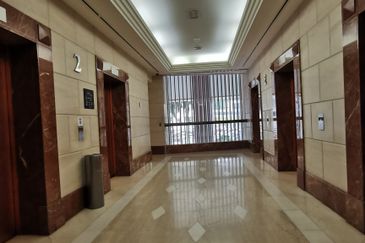
Menara HLX (formerly Menara HLA)
KL City Centre, Kuala Lumpur
RM 66,000
- beds |
- bath |
12000 sqft
RENT
FEATURED

Menara HLX (formerly Menara HLA)
KL City Centre, Kuala Lumpur
RM 40,700
- beds |
- bath |
7400 sqft




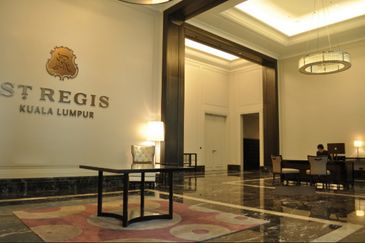



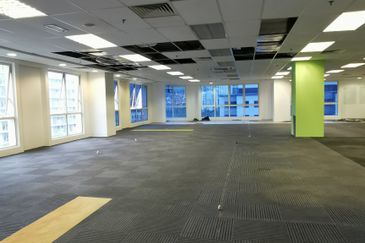
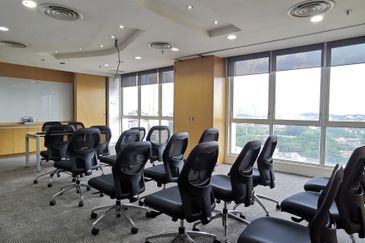
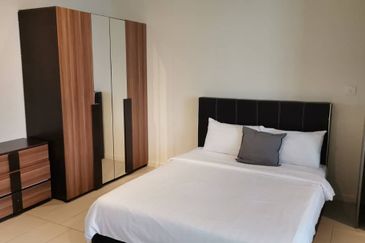


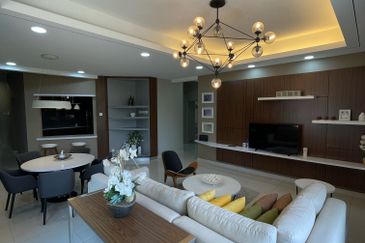
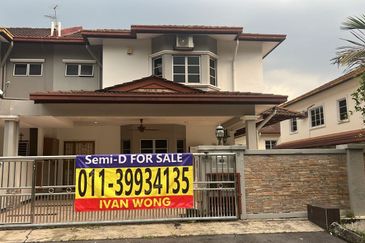
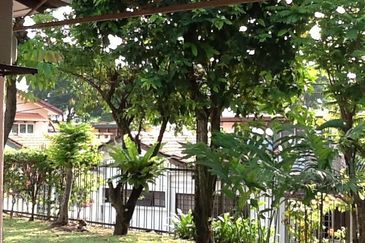
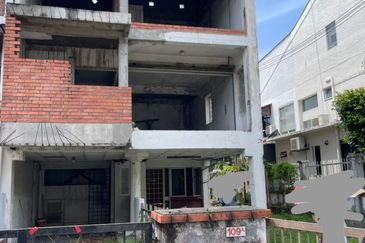
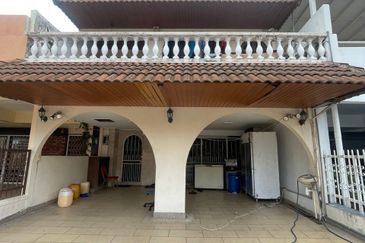

hero.jpg?GPem8xdIFjEDnmfAHjnS.4wbzvW8BrWw)



